| Online: | |
| Visits: | |
| Stories: |

| Story Views | |
| Now: | |
| Last Hour: | |
| Last 24 Hours: | |
| Total: | |
Dehydrating Eggs
Back in my Y2K prepper days, one of the things I bought for my food storage was powdered eggs. Of course we didn't need them for the much speculated Y2K disaster, but I did find them very handy to use at a time when I didn't have chickens. It would also be handy for winter, when the hens aren't laying well. When I started doing some research for a project, I decided to give this a try myself.
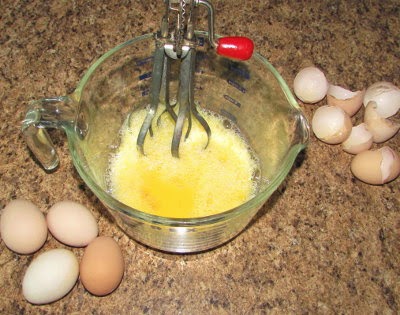 |
| The first step is to beat them well. |
Eggs can be dehydrated either cooked (as in dried scrambled eggs) or raw. There are warnings about dehydrating raw eggs, however, due to concerns about salmonella, that fairly ubiquitous bacteria associated with food poisoning. It is found both on the shell surface and within the egg itself. This is why commercially dehydrated raw eggs are pasteurized. Salmonella food poisoning outbreaks are usually associated with commercial factory-farm produced eggs. That isn't surprising, really, considering the overcrowded conditions under which these chickens live. The obvious recommendation would be to not use store bought eggs for dehydrating. It doesn't mean salmonella can't be a potential hazard with eggs from free-ranged chickens, just less likely. Salmonella is killed at 160°F (71°C), but food dehydrators top out at 145°F (62.7°C). The precaution would be not to use raw dehydrated eggs without cooking.
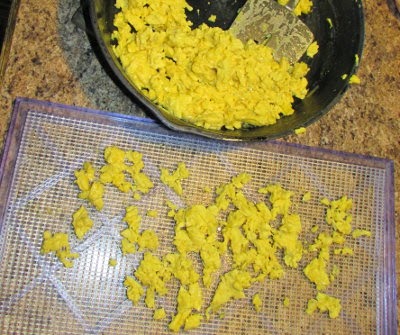 |
| I scrambled my eggs in a little coconut oil (you'll read why below). The dehydrator was set at 145°, the setting for meat, fish, & jerky. |
A second consideration is shelf life. Due to the high fat content of egg yolks, they won't keep for more than 3 or 4 months before becoming rancid. Rancidity can also be a problem for dried scrambled eggs cooked in oil. Two possibilities exist here. 1) use a non-stick cooking pan, or 2) use a saturated fat such as coconut oil, palm oil shortening, beef tallow, lard, or clarified butter. Saturated fats do not become rancid as easily as unsaturated oils. Since I only use cast iron and stainless steel cookware, I decided to try the coconut oil. Either way, if the dehydrated eggs can be vacuum packed, refrigerated, or frozen, so much the better.
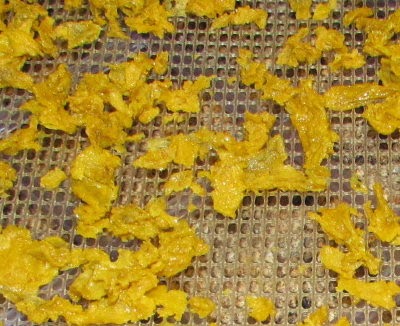 |
| Drying times vary. With our humidity it took about 6 hours to get the eggs thoroughly dried. Some folks go on to powder them, but I thought, “Why?” |
For drying raw eggs, a fruit leather tray is recommended. I don't have one, so I decided to make my own with foil.
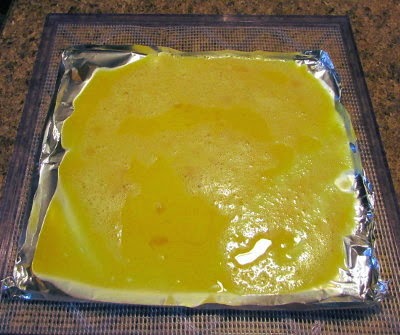 |
| Best results are with a thin layer of eggs. I did not use a cooking spray. |
When I did my research, I read a lot of folks' experiences. One complaint was that the eggs never got crispy dry but remained pliable. Of course they can't be powdered that way! I followed the advice to never try more than four eggs at a time.
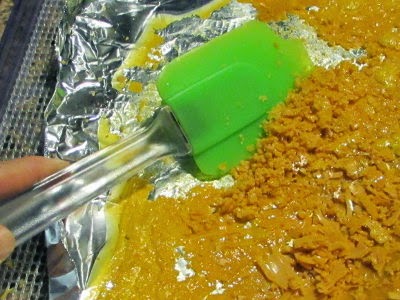 |
| I had to scrape the eggs off the foil, but it worked. |
My biggest problem was unevenness. I had one spot where the eggs took longer to dry. I scraped off the crispy stuff, powdered it in my blender, and let the rest dehydrate a little longer.
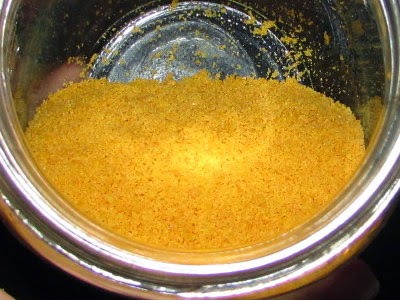 |
| They powdered beautifully. The bigger challenge will be keeping them dry. With our humidity, powdered things (like garlic) tend to clump over time. |
The beauty of dried foods is how much less space they take up.
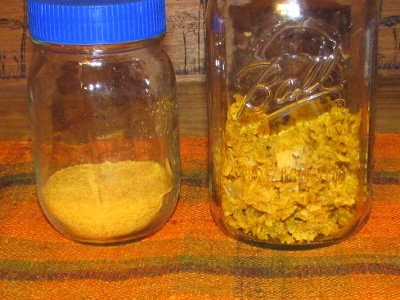 |
| 4 dried raw eggs on the left, 6 dried scrambled eggs on the right. If I powder the scrambled eggs, I'm guessing they'll re-hydrate & cook more like fresh. |
To use, mix the powder with equal part water and let sit about 5 or 10 minutes. For the scrambled eggs, I'll try adding an equal part boiling water and soaking, then cooking.
Two tests remain. The cooking tests and the make-it-or-break-it taste tests. I'll let you know about those soon.
Source:



